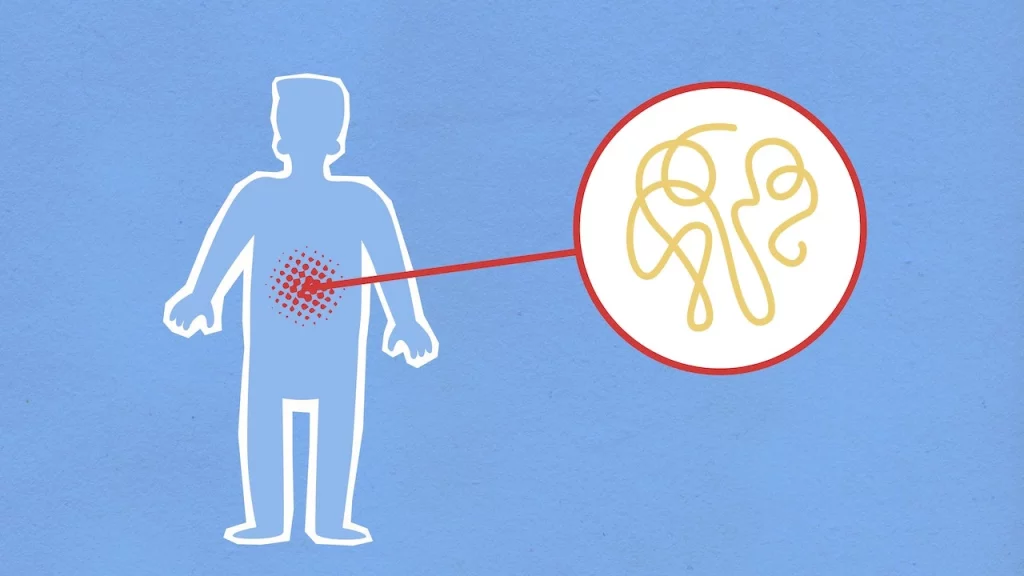Foods that Reduce Inflammation

“You are what you eat”, is a popular saying (originally said by Jean Anthelme Brillat-Savarin, in 1826, in his seven-volume book The Physiology of Taste.) It essentially means what you eat makes who you are. Food cures us, and at the same time, can kills us. Let’s take a closer look at the foods that fight inflammation and foods that cause it.
Table of Contents
What is Inflammation?
Inflammation is a natural response of the human body to protect against injury, infection, and diseases. However, sometimes, inflammation can be chronic and result in severe health problems such as heart disease, diabetes, and cancer.
Not a lot of people realize inflammation is one of the leading causes of health issues, and steps can be taken to mitigate this. Let’s look at a few foods that cause inflammation.
Foods that cause inflammation
Several foods contain substances that can trigger inflammation in the body. Some of the most common inflammation-inducing foods include
- Processed foods: Highly processed foods, such as fast food, packaged snacks, and sugary beverages, often contain trans fats, refined carbohydrates, and additives that may contribute to inflammation.
- Red meats: Red and processed meats like sausages and bacon are also high in saturated fats and can lead to inflammation.
- Sugary Foods: Foods high in added sugars, such as soda, candy, pastries, and desserts, can trigger inflammation and also lead to weight gain and other health issues.
- Vegetable Oils: Foods with high levels of Omega-6 fatty acids, such as vegetable oils, soybean oil, and corn oil, can contribute to inflammation in the body.
- Trans Fats: Artificial trans fats found in fried foods, margarine, and various processed snacks can promote inflammation and increase the risk of heart disease and other health problems.

- Alcohol: Excessive consumption of alcohol and caffeine can also trigger inflammation in the body.
Refined Grains: Refined grains like white bread, white rice, and pasta have had their fiber and nutrient-rich parts removed, leaving behind mainly starch. These can contribute to inflammation when consumed in excess.
It might feel good to consume these foods momentarily, but its long term effects on your body should be considered. It is important to limit the intake of these inflammation-inducing foods to maintain good health and prevent chronic diseases.
How does the body respond to inflammation?
When the body experiences inflammation, it is a natural response by the immune system to protect and heal the affected area(s). The process involves various cells, chemicals, and blood vessels working together. Here is a general overview of how the body responds to inflammation:
- Initiation: Inflammation is triggered by an injury, infection, or tissue damage. Immune cells detect these signals and release chemicals, such as histamines and cytokines, to initiate the inflammatory response.
- Vasodilation and Increased Permeability: Blood vessels in the affected area dilate, allowing more blood flow. This causes redness and warmth. The blood vessel walls become more permeable, allowing fluid, immune cells, and chemicals to move from the bloodstream into the surrounding tissue.
- Migration of Immune Cells: White blood cells, specifically neutrophils and macrophages, migrate to the site of inflammation. Neutrophils are the first responders and arrive early to eliminate pathogens and clear debris. Macrophages arrive later and play a crucial role in phagocytosis (engulfing and destroying pathogens) and releasing additional signaling molecules.
- Release of Chemical Mediators: Immune cells release chemicals, including prostaglandins, leukotrienes, and cytokines, which promote and regulate the inflammatory response. These chemicals can cause blood vessels to leak further, attract more immune cells to the site, and amplify the response.
- Tissue Repair and Regeneration: Inflammation helps initiate the healing process. Fibroblasts, specialized cells involved in tissue repair, produce collagen to rebuild damaged tissue. New blood vessels may also form to supply nutrients and oxygen to the area.
- Resolution: Once the injury or infection is under control, the inflammatory response begins to resolve. Chemical mediators that promote inflammation decrease, and immune cells actively work to remove debris and excess fluid from the area.
While acute inflammation is a necessary and beneficial response to injury or infection, chronic inflammation can be problematic and contribute to various diseases. It’s important to address the underlying causes of chronic inflammation and work with healthcare professionals to manage it effectively.
Signs of inflammation
Inflammation can manifest in various ways depending on the affected body part and the underlying cause. Common signs and symptoms of inflammation include:
- Redness: The affected area may appear red or have a reddish hue due to increased blood flow and dilation of blood vessels.
- Swelling: Inflammation often leads to swelling as fluid and immune cells accumulate in the affected area.
- Heat: Inflamed areas may feel warm to the touch due to increased blood flow.
- Pain: Inflammation can cause localized pain or discomfort, which can range from mild to severe.
- Loss of Function: Inflammation can restrict the normal functioning of the affected area, leading to reduced range of motion or difficulty using the affected body part.
- Fatigue: Systemic inflammation, such as in the case of chronic conditions, can cause fatigue, weakness, and a general feeling of being unwell.
- Fever: In some cases, inflammation can trigger a fever, especially when it is caused by an infection or an autoimmune response.
- Joint Stiffness: Inflammation in the joints can result in stiffness, reduced mobility, and difficulty with activities that involve joint movement.
- Headache: Inflammatory responses in the body, such as those associated with certain conditions or infections, can lead to headaches or migraines.
It’s important to note that while inflammation is a natural immune response to protect the body, chronic inflammation can be a sign of an underlying health issue. If you experience persistent or severe inflammation or if you’re concerned about your symptoms, it’s best to consult a healthcare professional for a proper diagnosis and appropriate treatment.
What are some quick inflammation relief?
If you’re looking for quick relief from inflammation, here are some strategies that may help:
- Apply Cold Compress: Applying a cold compress or ice pack to the inflamed area can help reduce swelling and provide temporary pain relief. Wrap the cold pack in a thin cloth and apply it to the affected area for 15-20 minutes at a time, several times a day.
- Take Over-the-Counter Pain Relievers: Nonsteroidal anti-inflammatory drugs (NSAIDs), such as ibuprofen or naproxen, can help reduce inflammation and provide relief from pain. Follow the recommended dosage instructions and consult a healthcare professional if you have any underlying health conditions or are taking other medications.
- Rest and Elevate: Resting the affected area and elevating it above heart level can help reduce swelling and promote healing. This is particularly helpful for inflammation in the limbs or joints.
- Stay Hydrated: Drinking plenty of water can help flush out toxins and promote overall health. It may also help reduce inflammation by keeping the body hydrated.
- Gentle Exercise: Engaging in low-impact exercises, such as walking or swimming, can help improve blood circulation and reduce inflammation. Avoid strenuous activities that may exacerbate the inflammation.
- Use Topical Remedies: Applying topical creams or gels that contain ingredients like menthol, camphor, or capsaicin can provide temporary relief from localized inflammation and pain.
- Practice Stress Management: Chronic stress can contribute to inflammation. Engaging in relaxation techniques such as deep breathing exercises, meditation, or yoga may help reduce stress levels and indirectly alleviate inflammation.
- Consume Anti-Inflammatory Foods: Some foods have natural anti-inflammatory properties. Incorporate foods like fatty fish (salmon, tuna), fruits (berries, cherries), vegetables (leafy greens, broccoli), nuts, seeds (walnuts, flaxseeds) and spices such as turmeric, ginger, black pepper, cinnamon and cilantro into your diet, as they contain nutrients that can help reduce inflammation.
It’s important to note that while these strategies may provide temporary relief, they may not address the underlying cause of inflammation. If you have persistent or recurring inflammation, it’s advisable to consult with a healthcare professional for a proper diagnosis and appropriate treatment.
Take aways
Inflammation is a normal bodily process that helps fight off infection and heal wounds. However, when inflammation becomes chronic, it can lead to pain and a variety of health issues. Fortunately, there are several ways to address inflammation and lead a pain-free life.
By adopting an anti-inflammatory diet, reducing stress, exercising regularly, and getting enough sleep, you can significantly reduce chronic inflammation. Additionally, incorporating natural anti-inflammatory supplements like turmeric and omega-3 fatty acids can also help alleviate inflammation.
It’s important to remember that every individual is different, and what works for one person may not work for another. It’s always best to consult with a healthcare professional before making any significant changes to your diet or lifestyle.
Overall, taking a holistic approach to reducing inflammation can lead to a healthier, more pain-free life. By making mindful choices and prioritizing self-care, you can take control of your health and wellbeing.
I hope you found this informative and useful. Check out my other health and wellness posts as well.
Add Your Heading Text Here
One comment
Leave a ReplyCancel Reply
This site uses Akismet to reduce spam. Learn how your comment data is processed.





[…] had earlier written about pre-workout stretches to prevent injuries and foods that reduce inflammation. Here, I take a look at one commonly over-used muscle and the remedies to alleviate pain, […]